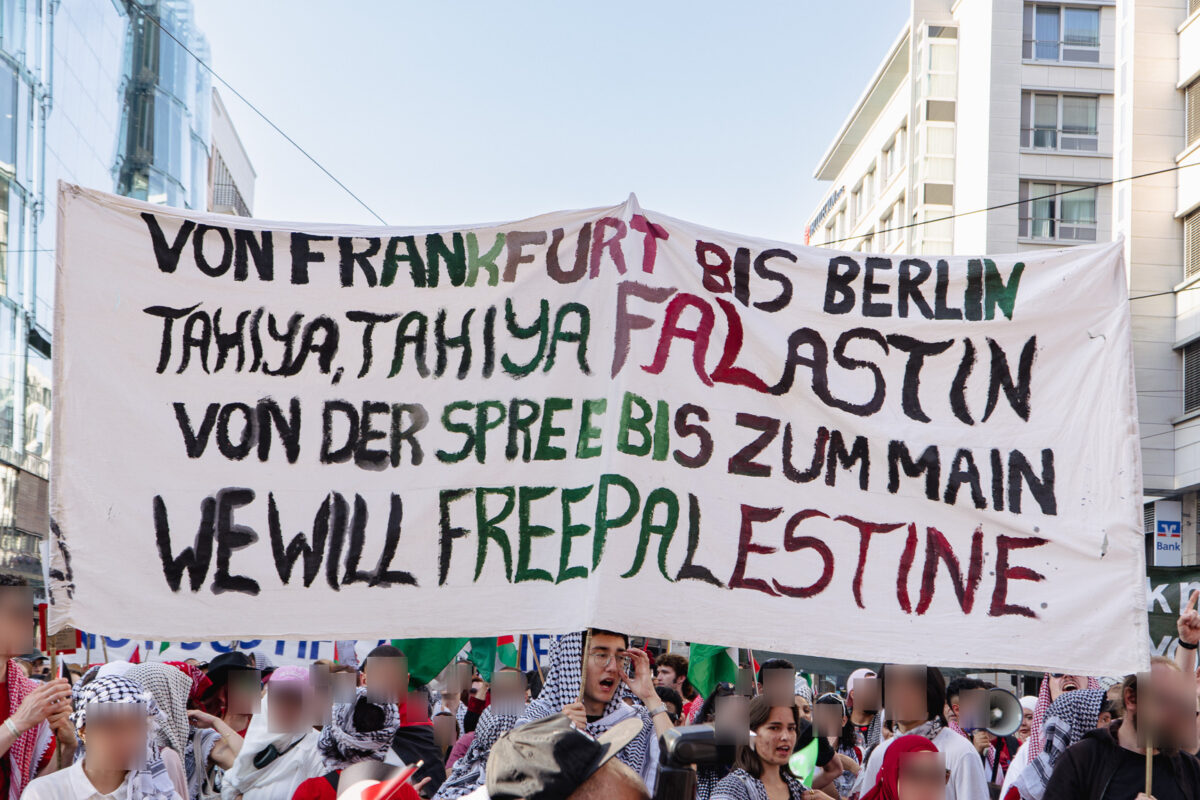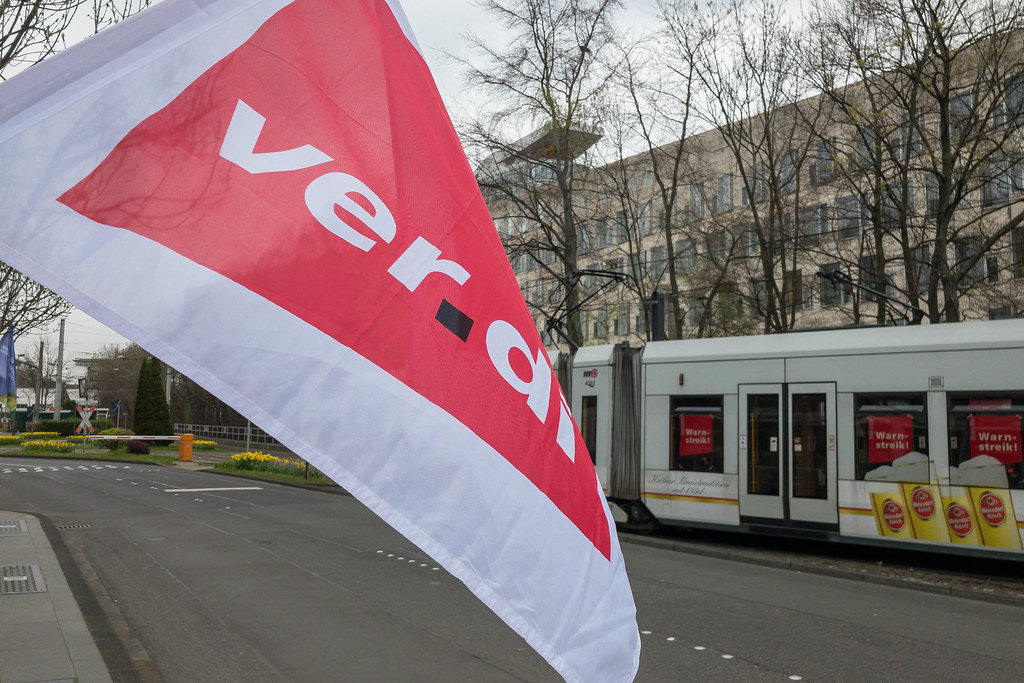Unfortunately, that alone won’t be able to wrest 243,000 apartments from for-profit companies.
On 28 June 2023, when the experts’ report was made public, I heard no champagne corks popping in my neighborhood, despite the large number of activists who live there. Since 2019, 3,000 individuals citywide have campaigned against housing corporations that neglect their properties but pay investors good dividends. The Deutsche Wohnen & Co. enteignen (DWE) initiative developed from many failed attempts to get a grip on Berlin’s skyrocketing rents. I’ve written about this in earlier articles.
In the last two years, it felt as if little was happening given the pandemic restrictions and election rerun needed after incredibly poor planning in 2021 had resulted in insufficient ballots, late poll openings, and voters being turned away. In late April this year the new conservative mayor, Kai Wegner (CDU) took office. Since then, Berlin politics seem to have taken a sharp right-wing turn, especially regarding transport and climate policies despite our laws—and common sense. Last week was the planet’s hottest. Ever.
Negative trends in housing have not slacked during this period: Although prices for apartments have slumped, construction, including affordable housing, has been slowed due to supply chain problems, building costs, and higher interest rates. Rents have continued to rise and tenants are threatened by the acceleration of several disadvantageous practices. I touch on these concerns in this article but concentrate on three initiatives related to Reichenberger Kiez in Kreuzberg, where I’ve lived for nearly 19 years: DWE, “Initiative Hermannplatz,” and “No Hype No Hide.”
For starters, the terms used by Deutsche Wohnen & Co Enteignen. DWE used the German word for “expropriate” to great effect: politicians violently reacted to the mere thought and a lot of ink was spilled. Just saying the word was enough to cause an otherwise calm dinner partner to jump up and shriek their rejection. (That happened to me.) But once the initiative had gained momentum and the name was established, discussion turned to the “socializing” (Vergesellschaftung) foreseen in Art. 15 of Germany’s Basic Law. Sebastian Engelbrecht of Deutschland Radio explained the distinction: socialization applies to whole branches of industry, as per DWE, whereas expropriation refers to confiscation for specific projects, such as a farmer’s field for a highway (which must be reimbursed at market prices, a nonstarter for DWE).
To recap
On the evening of 26 September 2021, learning that one million Berliners had voted for the referendum—59.1 percent of eligible voters [1 ]—DWE activists did open lots of champagne bottles! With the DWE cheerleaders, we partied well into the night.
But true to her party’s ongoing support for the construction industry (which over decades has involved real sleaze), the new Social Democratic Party (SPD) Mayor Franziska Giffey rejected DWE’s approach. To buy time, the new SPD-Green-Left Party governing coalition proposed a 13-member “commission of experts” to study the referendum’s legality and feasibility.
In fact, a referendum represents the peoples’ will, which is to be followed. But acknowledging DWE’s novel approach and the years needed for a referendum to reach the ballot, the campaign had decided to not present a law. Instead, the DWE referendum called on the government to write one.
After lots of discussion, DWE agreed to “accompany” the commission, and used its right to name three people who were not part of its campaign to the commission: a human geographer and urban researcher, and two constitutional experts.
The commission worked for over a year. But the minutes were not always published, and Berlin’s lack of a land registry (Kataster) meant that the experts had no hard data on the quantity, value, or ownership of city real estate. In late June, the commission’s 156-page report was presented to Berlin’s current mayor, who begrudgingly accepted it, repeating his skepticism for the umpteenth time.
What’s in the report???
According to DWE’s summary for journalists, the report refutes virtually all the reservations about DWE. With respect to one of its most basic questions, the experts unanimously agreed that Berlin has the competency “to legally regulate a socialization of real estate holdings of large housing companies located in Berlin.” That is, DWE is in line with Art. 15 of the Basic Law. This issue was especially critical after Germany’s constitutional court ruled in April 2021 that Berlin lacked the authority to institute a rent cap—a decision that immediately swelled the ranks of DWE supporters and contributed to the referendum’s success.
It’s worth looking at specific points.
The majority of the commission holds socialization à la DWE to be “proportional.”
The report says that socialization is a suitable approach to reduce those rents and to at least stabilize other rents throughout the city. In addition, Berlin would benefit from fewer people needing financial assistance to pay the rent.
Flatly rejecting the mantra “Bauen! Bauen! Bauen! (Build! Build! Build!)” and protests that socialization “does not create a single new apartment,” the commission wrote that “ramping up new construction is not an alternative for securing the permanent supply of affordable housing.” There’s no way around it: socialization is necessary.
As for the price tag, “Assessment can be based on the income from the non-profit management [2] envisaged by the project.” Exactly what DWE has been saying all along! Its “fair rent model” bases compensation on moderate rents—way below the €36 billion bandied about by naysayers.
Furthermore, considering the level of compensation, the commission decided that in ensuring affordable housing, tenant interests outweigh the profit-making interests of housing corporations. Socialization can be financed through promissory bills repaid by rental income. Berlin can decide what’s affordable and need not go into debt compensating the current owners. Four members opined that compensation should not be significantly below market value. But it need not be at the same level.
The commission agreed that the 3,000-apartment threshold per company is legally permissible “in view of the efficiency of such an approach in developing the required total portfolio.” That does not represent “unequal treatment,” and excluding coops, city-owned and non-profit housing enterprises is justified because they benefit the public.
Finally, most commission members are of the opinion that socialization can be practiced for all holdings of housing companies listed on the stock exchange, including private equity funds. Even more companies than DWE had envisioned. The initiative is jubilant: “This will allow us to capture more companies than expected, including private equity funds. We can tackle the root of the problem: housing speculation!”
New DWE posters proclaim its success: “Expropriation is doable. No more excuses!”
Now what?
It’s time to write the law!
Unfortunately, the CDU is instead planning a “framework law” which would not come into force for two years—because the conservatives want time to legally challenge their own law. However, in late May, the SPD base criticized the CDU’s maneuver. Perhaps that’s what led to the SPD senator for urban development, housing, and construction, Christian Gaebler, announcing on local TV that a socialization law would be developed in parallel with the framework law. (But the very next day, he said the opposite to Berlin’s parliament.)
This points to a fundamental problem: the expert commission was staffed by the government that was voted out in February! The CDU had no say in it: unsurprisingly, the dissenting minority voices are conservatives.
So what should we do? Lobby our elected representatives? DWE is concerned that they could draft a law—which would take a few years to be written and debated—that is designed to be rejected by the constitutional court.
The safer approach would be to stage a second referendum, this time with a specific law. (Put on your walking boots!)
DWE is discussing the next steps. It’s July and hot as hell, and schools, families, and the city government are on vacation. Over the summer, we’ve got to explain to Berliners what the report means. DWE should also draw attention to the danger that, as a pacification measure, the city could buy back more apartments for the city housing companies—at today’s astronomical prices. That would only further burden the city and reward speculation. We’ve been there and done that.
While waiting for the commission’s report, DWE produced podcasts, organized events, and published background information, while Kiezteams continued to meet and also addressed local concerns, including the end of the period in which private developers have to offer apartments at affordable rents: for up to 30 years. After that, they can charge market rents. Berlin entered this millennium with 430,000 subsidized apartments; in 2021, it had just 142,343 left. By 2025, subsidies will end for more than 50,000 additional apartments, and with prospective tenants no longer having to prove they need assistance, landlords will be incentivized to get rid of the old ones. Urban sociologist Andrej Holm calls this “publicly financed gentrification.”
But Hamburg recently passed a law forcing new social housing to offer affordable rents for 100 years. Anything Hamburg can do, Berlin can, too!
Another problem confronting many tenants whose apartments have been sold are claims of “Eigenbedarf” (personal need). Fortunately, Berlin’s law preventing a new owner from claiming to need their property for a period of 10 years was extended last month. However, according to Sebastian Bartels of the Berliner Mieterverein (BMV), the huge increase in such claims indicates the need for extra protection, including a total prohibition on Eigenbedarf in areas requiring special efforts to protect the current population mix (Milieuschutz), along with restrictions related to the length of a tenant’s lease and age.
In the past, the city has saved entire buildings in protected areas by pre-emptively purchasing those whose sales would likely cause tenants to be driven out. But in November 2021, Berlin’s Vorkaufsrecht, the tenant movement’s most powerful tool, was declared unlawful. The Liberals (FDP)—the same party that refuses to consider introducing a speed limit on highways to lower CO2 emissions—are stalling new legislation.
According to Katrin Schmidberger (Green Party speaker on Berlin’s housing, rents and budget policy), in an interview of 4 July in ND, the current CDU-SPD government rejects building more affordable housing within the S-Bahn ring. It’s also preventing districts from freely disposing of housing subsidies to protect tenants. In addition, districts that contest specific construction projects promoted by the CDU-SPD will lose authority over them—the same way jurisdiction for Karstadt on Hermannplatz [3] was transferred from Kreuzberg’s BVV (district parliament) to Berlin’s Senat (city government).
What IS happening with the plan to raze the department store on Hermannplatz and replace it with a version of the mammoth building from 1929?
There’s very little information available! It’s possible that the Signa Group—a holding with three separate companies, one of which owns Galeria—of Austrian billionaire René Benko (who has been convicted of corruption and accused of bribery, tax evasion, and illegal donations) is in financial trouble. Last October, Signa wanted another €234 million in state aid for Galeria (after getting €680 million in the last three years), before announcing—barely six months later—that almost half its stores would be closed within the year. With visions of deserted city centers (where Benko’s stores occupy prime locations) and 17,000 new jobless employees, the government caved in to his demands. Oddly enough, his creditors renounced around €2 billion, department store workers bit the bullet—and Signa paid out €450 million in dividends. [4] This month, the European Central Bank is investigating all the banks doing business with Signa.
Some commentators consider that the Signa Group is too big to fail (it’s definitely much too convoluted to explain here!), while insiders assume that financial woes explain why Signa recently sold its unfinished 134m-high building and adjacent department store on Alexanderplatz. That was one of the three prestige projects—on Hermannplatz, Alexanderplatz, and Kurfürstendamm—that Signa was given the right to build in exchange for ensuring jobs in four Berlin department stores in a Letter of Intent (LoI) of August 2020. Not that the two are related. Incredibly, calls for the government to halt all collaboration with Signa because the corporation broke its word by closing local stores fall on deaf ears. Hunh?
Meanwhile, on Hermannplatz
Back to my neighborhood and the campaign regarding the future of the department store that Benko owns on Hermannplatz. This spring, citizens were invited to comment on the building plans—in an online, non-binding, “participation” farce. The energetic efforts of Initiative Hermannplatz to collect 7,000 signatures protesting Signa’s plans, along with rallies, demonstrations, and even a “presence” on Hermannplatz in the form of a small kiosk, have merely succeeded… in stalling the project.
To counteract widespread rejection of the plans by its low-income neighbors with mostly immigrant backgrounds, Signa mounted an extravagant social media campaign and nostalgic exhibit about the original building, and opened “Dialog Hermannplatz” with a café and bike route through the block. A banner appeared on Galeria’s façade: Nicht ohne Euch (“Not without You” in informal German) while nearby tenants were forced to remove their critical banners under threat of immediate expulsion. In response to the numerous objections, from sketches showing only white people enjoying themselves to the environmental damage caused by demolitions and the excessive use of concrete, Signa has repeatedly announced modifications and published pretty new plans. But it has never explained its real intentions.
In a recent event about the class struggle on Hermannplatz presented by the Berliner MieterGemeinschaft, Niloufar Tajeri, architect and prime mover of the Hermannplatz initiative, said that the Ver.di union representing Galeria workers continues to cling to the LoI, hoping against hope that it really will protect their jobs. But she pointed out that employees in other German cities have self-organized to save their stores and is confident that when push comes to shove, employees at Hermannplatz will also become active. She explained how the project threatens her neighborhood, describing it as not just about building and environmental concerns, but a plan with negative social ramifications as well.
Tajeri also cited two practical issues. The first is that the project conflicts with historical preservation regulations (pertaining to just a small part of the current building). But preservation is open to interpretation, and with jurisdiction over such matters recently transferred to the city administration in what Left Party speaker for urban development Katalin Gennburg calls “deregulation for investors,” such objections are unlikely to affect the plans.
However, a second matter has been gaining attention since a high-rise project on Alexanderplatz caused part of the subway’s subterranean structure to collapse last October. The significant damage will continue to prevent the U2 line serving Prenzlauer Berg and Pankow for many months to come, aboveground construction has been halted, and other subway lines at the station, including the U5, may also be affected.
With respect to Hermannplatz, according to Tajeri, not only do two subway lines cross there, but also the tunnel for transporting broken cars to the BVG workshop.
Hype & Hide in Reichenberger Kiez
Closer to home, luxury housing projects in Reichenberger Kiez backyards have reached new magnitudes. Arguably, the neighborhood’s gentrification began in 2010 with CarLoft, an apartment building with an elevator that allows tenants to park their cars at the door. (I’ve already railed about how gentrification serves to suburbanize cities… Does it get any crasser?) Vigorous protest, including paint bombs and even stones, did not stop the project, although the owner later admitted that he’d had to lower his selling price. Recently, however, a 263 m2, four-room apartment at Reichenberger Str. 80 was advertised for €2.9 million. OMG.
More recently, Kiez residents were incited to act by the audacity of the latest luxury project, “Hype & Hide.” Buyers are promised it’ll be like living “in a private park, embedded in an inspiring neighborhood marked by authentic charm.” In fact, with most of the trees chopped down for the builders, between €690,000 and €2.5 million buys you a view of the rear of a modest 1970s apartment block, with a parking area lined by spindly and browning arborvitae shrubs, likely planted to offset the noble trees that were felled.
My attention was drawn to a poster showing the addresses of nine luxury projects in the neighborhood. I knew it was incomplete because once construction is finished, new housing is hidden from sight and protected by locked and surveilled doors. I can no longer locate the two built near me just a few years ago.
When the first permit to build behind the apartment houses at Reichenberg Straße 140–42 and Lausitzer Straße 11–15 was granted in March 2017, the tenants appealed to Kreuzberg’s parliament (BVV). Building councilor Florian Schmidt promised to contact the developer and arrange a meeting for all involved. The project was never realized. But gradually the metal workers’ collective was forced to move and their buildings were razed. For years, the space was strewn with rubble and refuse. In 2022, when a new building permit was given, the neighbors confronted the BVV about the lack of citizen involvement promised two years earlier. They wondered how “Hype & Hide” fulfills the district’s stated aim of unsealing the ground and making the district greener, and how it addresses Kreuzberg’s housing crisis. The answer: The plans meet building code requirements; no citizen participation is foreseen. The only possible action is to spoil the developer’s marketing efforts. (That’s in the official response!)
With that in mind, “No Hype & No Hide” organized a first neighborhood walking tour that kicked off with an activist in the guise of a sparrow mourning her degraded environment after the garden was bulldozed and numerous trees felled for a different luxury project. (In fact, the new 5-story luxury building—“in the middle of Kreuzberg, yet shielded from all the hubbub”—will deprive the activist’s apartment of any direct sunlight.) The 40 or so participants then moved on to CarLoft, a few blocks away, leafletting passersby and dancing to DWE protest songs. We ended the walk by hanging our banner and a funeral wreath with handwritten condolences on the Hype & Hide site fence, while the Lauratibor chorus [5] sang the Kiez anthem [my English adaptation]: “What elixir is more potent than money? What unites us? Let’s go into the streets and find the potion of resistance!”
Berlin lacks 47,000 affordable apartments. Urban densification measures, which is widely regarded, though not accepted, as inevitable, are paving over gardens and chopping down trees. But destroying our environment for luxury buildings does nothing to alleviate Berlin’s housing shortage.
Things will just heat up further. “Buy luxury, buy trouble!”
Last month, the new rent index (Mietspiegel) was published: since 2021, rents in Berlin have gone up by 5.4 percent. Unfortunately, the index is based on the rise in consumer prices and doesn’t take into account the loss in real wages. But without it, landlords would compare apartments and make assessments, which would probably be less favorable for tenants.
Don’t be surprised when your landlord sends you a letter soon. Do check the proposed increase carefully and contest whatever is illegal: rent hikes of more than 15 percent in three years are not allowed. According to a BMV survey, private owners overcharge the most. Your greatest contribution to Berlin could well be helping to control rents by not accepting illegal increases.
Im the midst of these depressing developments, I find some relief in learning that the inimitable Museum der Dinge (Museum of Things), which lost its lease when the complex at Oranienstraße 25 (also home to the neighborhood institutions of the nGbK, “one of Germany’s most important and largest art societies,” and the Kisch & Co. bookstore), has found temporary new digs at Leipzigerstraße 54. The museum is scheduled to close in early November and reopen in its new premises in April 2024. Eventually the museum will find a permanent home in a building that hasn’t yet gone up. Visit now!
Unlike my earlier articles, I wrote this feeling depressed and overwhelmed. Two years ago, everything was still in flux. Now it seems that everything but rents are stagnating. The only approach that I see capable of helping ensure Berlin’s future as a livable city is education. But don’t just learn and get involved in the issues that directly affect you (possible rent increases and the owner’s claim to need your apartment, Eigenbedarf [6]) and your neighborhood (which could be luxury-housing projects or social service providers being chased away by excessive rents), but also Berlin as a whole (DWE)!
One of the most encouraging developments of recent years is that environmental issues are being linked to housing. According to figures presented by Daniel Dieckmann of the very long and ongoing fight for Habersaathstraße 40–48 (in Mitte), Germany’s building and construction sector alone consumes 90 percent of raw materials, produces 40 percent of CO2 emissions and 55 percent of the waste. Students at the University of Kassel have written an open letter to the Federal Minister for Housing, Urban Development, and Building, demanding a moratorium on demolitions and new construction so that Germany can meet its climate targets, and have even greater ambitions. DWE, Initiative Hermannplatz, and No Hype No Hide all emphasize climate concerns. Think about your part.
Well-informed Berliners will make a difference—or die trying. Take the potion of resistance into the streets.
We told you so! (By the way, my dinner partner came around to supporting DWE—even before we won.😉)
© Nancy du Plessis 2023
Footnotes
1 Had non-German residents been able to vote, the figure would have been much higher. Voting restrictions were addressed in the English-language “Right to the City” campaign.
2 DWE’s booklet (“Gemeingut Wohnen”) discussing the public service company (Anstalt öffentlichen Rechts, AöR) to manage the socialized apartments is available for free download (in German)
3 Karstadt was merged with Kaufhaus to become Galeria, the last big chain of German department stores.
4 Btw, in 2019, Benko bought Manhattan’s Chrysler Building: he likes Art Deco.
5 Reichenberger Kiez’s fantastic protest opera
6 For more information about Eigenbedarf, a pamphlet in German from the Mieter:innengewerkschaft Berlin (Berlin Tenants’ Union) is now online.




